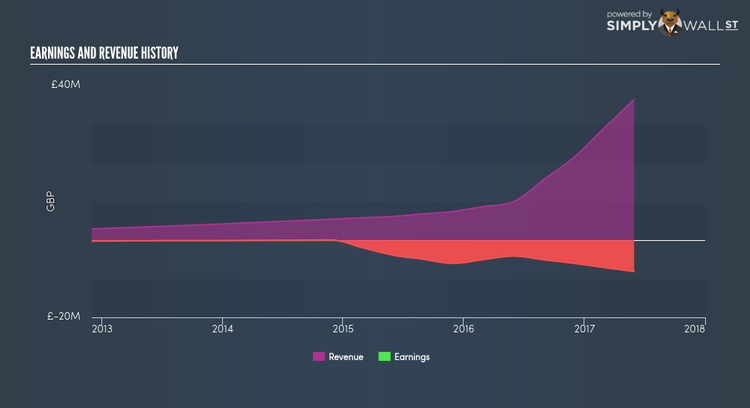Why You Need To Look At This Factor Before Buying Satellite Solutions Worldwide Group plc (LON:SAT)

If you are a shareholder in Satellite Solutions Worldwide Group plc’s (AIM:SAT), or are thinking about investing in the company, knowing how it contributes to the risk and reward profile of your portfolio is important. The beta measures SAT’s exposure to the wider market risk, which reflects changes in economic and political factors. Not all stocks are expose to the same level of market risk, and the broad market index represents a beta value of one. Any stock with a beta of greater than one is considered more volatile than the market, and those with a beta less than one is generally less volatile.
View our latest analysis for Satellite Solutions Worldwide Group
An interpretation of SAT’s beta
Satellite Solutions Worldwide Group has a beta of 1, which means that the percentage change in its stock value will be higher than the entire market in times of booms and busts. A high level of beta means investors face higher risk associated with potential gains and losses driven by market movements. Based on this beta value, SAT can help magnify your portfolio return, especially if it is predominantly made up of low-beta stocks. If the market is going up, a higher exposure to the upside from a high-beta stock can push up your portfolio return.
Does SAT’s size and industry impact the expected beta?
A market capitalisation of GBP £52.05M puts SAT in the category of small-cap stocks, which tends to possess higher beta than larger companies. However, SAT operates in the telecom industry, which has commonly demonstrated muted reactions to market-wide shocks. Therefore, investors can expect a high beta associated with the size of SAT, but a lower beta given the nature of the industry it operates in. It seems as though there is an inconsistency in risks from SAT’s size and industry. A potential driver of this variance can be a fundamental factor, which we will take a look at next.
Is SAT’s cost structure indicative of a high beta?
An asset-heavy company tends to have a higher beta because the risk associated with running fixed assets during a downturn is highly expensive. I test SAT’s ratio of fixed assets to total assets in order to determine how high the risk is associated with this type of constraint. Since SAT’s fixed assets are only 16.85% of its total assets, it doesn’t depend heavily on a high level of these rigid and costly assets to operate its business. Thus, we can expect SAT to be more stable in the face of market movements, relative to its peers of similar size but with a higher portion of fixed assets on their books. However, this is the opposite to what SAT’s actual beta value suggests, which is higher stock volatility relative to the market.
What this means for you:
Are you a shareholder? You could benefit from higher returns during times of economic growth by holding onto SAT. Its low fixed cost also means that, in terms of operating leverage, it is relatively flexible during times of economic downturns. Consider the stock in terms of your other portfolio holdings, and whether it is worth investing more into SAT. For more company-specific research on SAT, check out our our free analysis plaform here.
Are you a potential investor? Before you buy SAT, you should take into account how their portfolio currently moves with the market, in addition to the current economic environment. SAT may be a valuable addition to portfolios during times of economic growth, and it may be work looking further into fundamental factors such as current valuation and financial health. You can examine these factors in our free fundamental research report for SAT here.
To help readers see pass the short term volatility of the financial market, we aim to bring you a long-term focused research analysis purely driven by fundamental data. Note that our analysis does not factor in the latest price sensitive company announcements.
The author is an independent contributor and at the time of publication had no position in the stocks mentioned.

